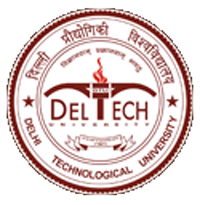Please use this identifier to cite or link to this item:
http://dspace.dtu.ac.in:8080/jspui/handle/repository/21634| Title: | ASSOCIATION BETWEEN KIRs AND LEUKEMIA SUSCEPTIBILITY |
| Authors: | MISHRA, ANUSHKA |
| Keywords: | KIRs LEUKEMIA NATURAL KILLER CELLS NK CELLS LEUKEMIA SUSCEPTIBILITY KILLER-CELL IMMUNOGLOBULIN-LIKE RECEPTORS |
| Issue Date: | May-2025 |
| Series/Report no.: | TD-7901; |
| Abstract: | Aim: - Natural Killer (NK) cells are critical components of the innate immune system, serving as an essential first-line defense mechanism against malignancies such as leukemia. Their activity is controlled by a group of genes called Killer-cell Immunoglobulin-like Receptors (KIRs), which can either activate or inhibit NK cell function. Polymorphisms in these genes may influence how well NK cells can detect and destroy cancer cells. This review explores the association between germline KIR frequency and predisposition to leukemia, additionally also aims to get insight on whether activating KIR3DS1 gene is associated with an increased or decreased risk of developing leukemia. Among different cancers, the heterogeneity of leukemia, provides a window to explore the disease-specific and shared mechanism. Using data from previously published case-control studies, the results for KIR3DS1 gene was combined and analyzed using chi-square test. Result: - Data from two independent Iranian studies (Mirzazadeh et al., 2023; Alavianmehr et al., 2020) were pooled to investigate the association of the activating KIR gene KIR3DS1 with leukemia susceptibility. A chi-square test was performed on the combined dataset, which included a total of 276 cases and 290 controls. The analysis yielded a chi-square value of 17.647, with a p-value < 0.001, indicating a statistically significant association. The calculated odds ratio (OR) was 0.522, suggesting that individuals carrying the KIR3DS1 gene were approximately 48% less likely to develop leukemia compared to non-carriers in this dataset, suggesting a protective role. Conclusion: - These findings suggest that activating KIRs do not always raise leukemia risk, and their effect may depend on other immune factors such as inhibitory KIRs and HLA ligands. More research is needed, combining genetic and functional studies across different populations to better understand these immune interactions and their role in leukemia. More extensive research on this topic could support the development of more targeted treatments for blood cancers. While the current study is not a full meta-analysis, it shows the value of pooled statistical evaluation in a small scale gene association research |
| URI: | http://dspace.dtu.ac.in:8080/jspui/handle/repository/21634 |
| Appears in Collections: | M Sc |
Files in This Item:
| File | Description | Size | Format | |
|---|---|---|---|---|
| Anushka M.Sc..pdf | 603.63 kB | Adobe PDF | View/Open |
Items in DSpace are protected by copyright, with all rights reserved, unless otherwise indicated.



